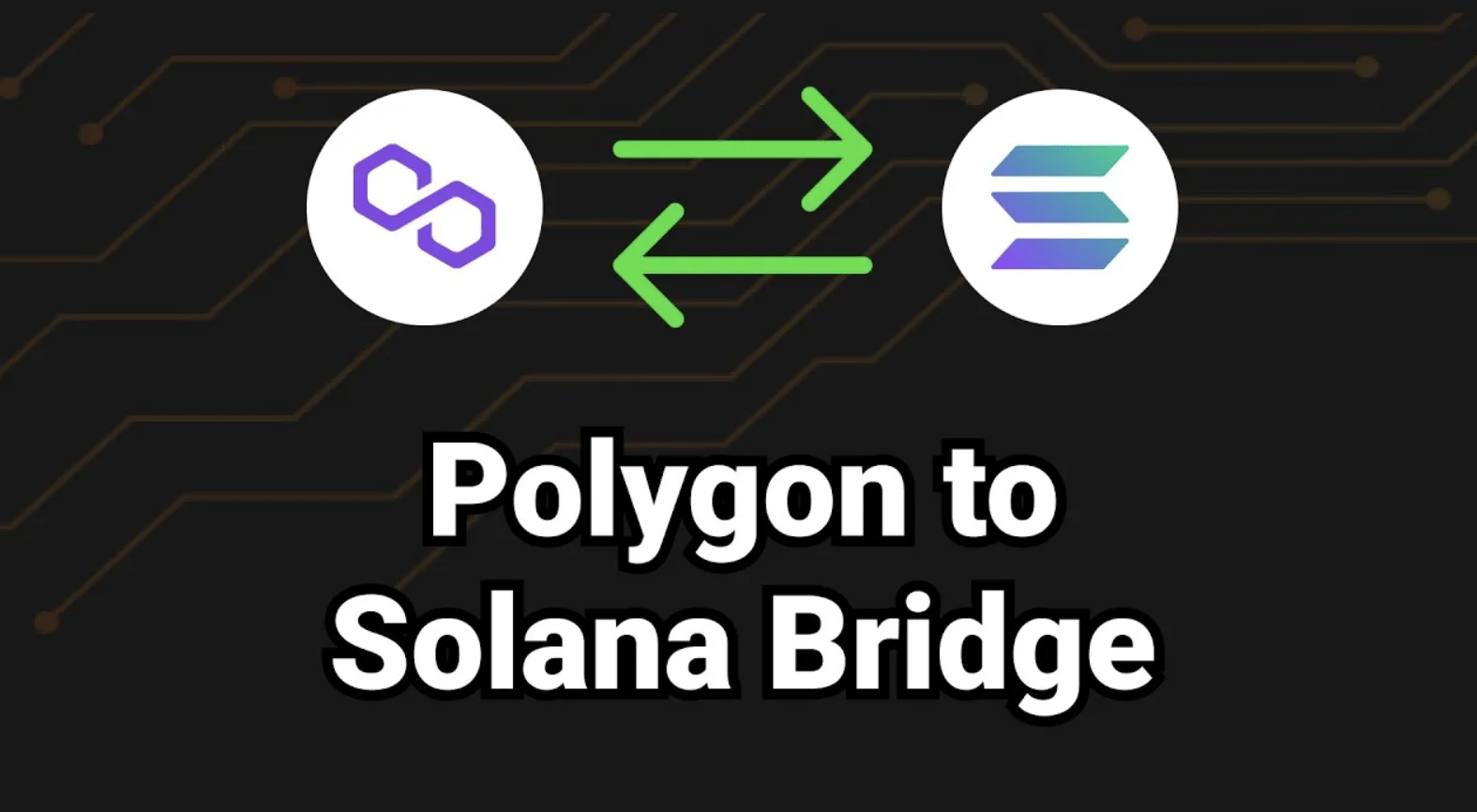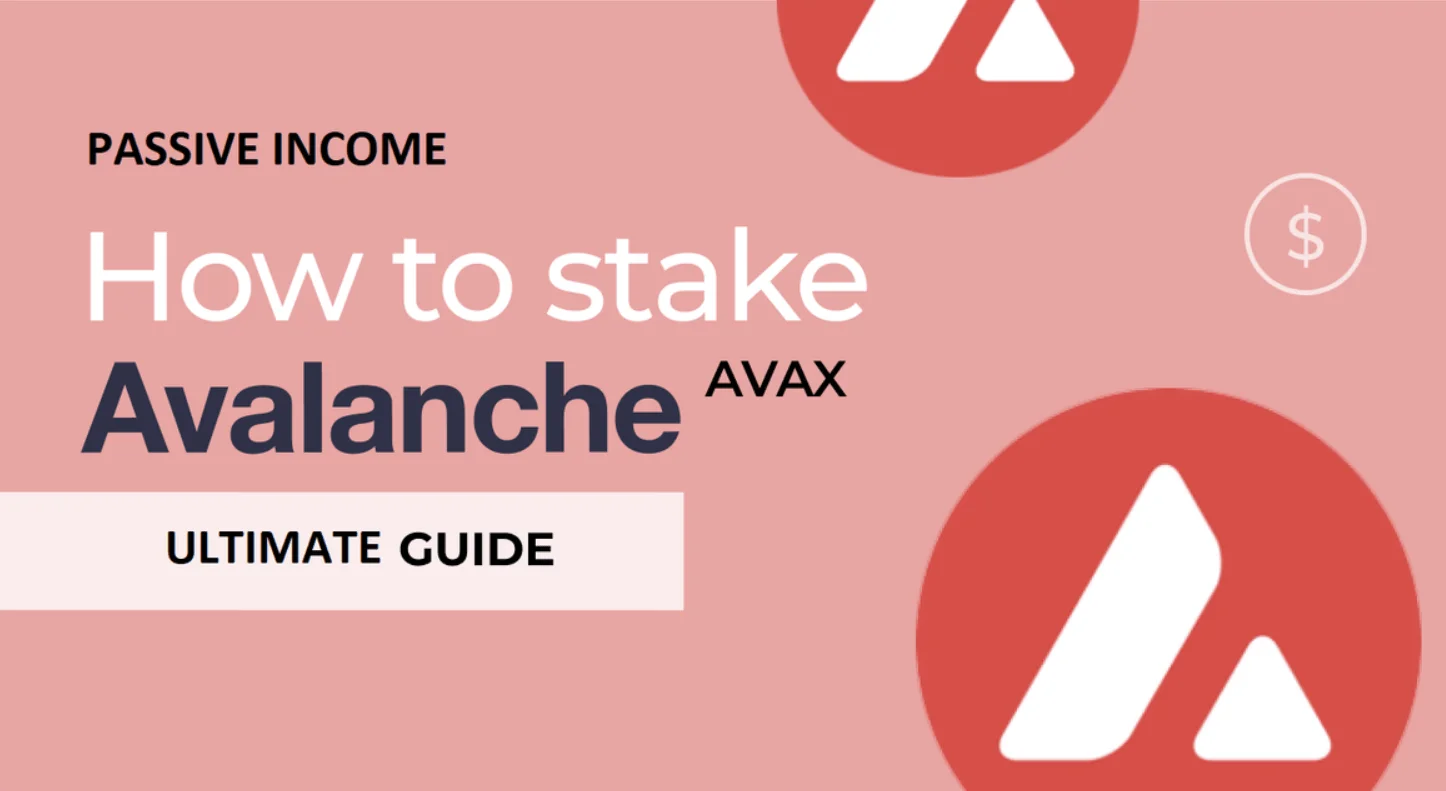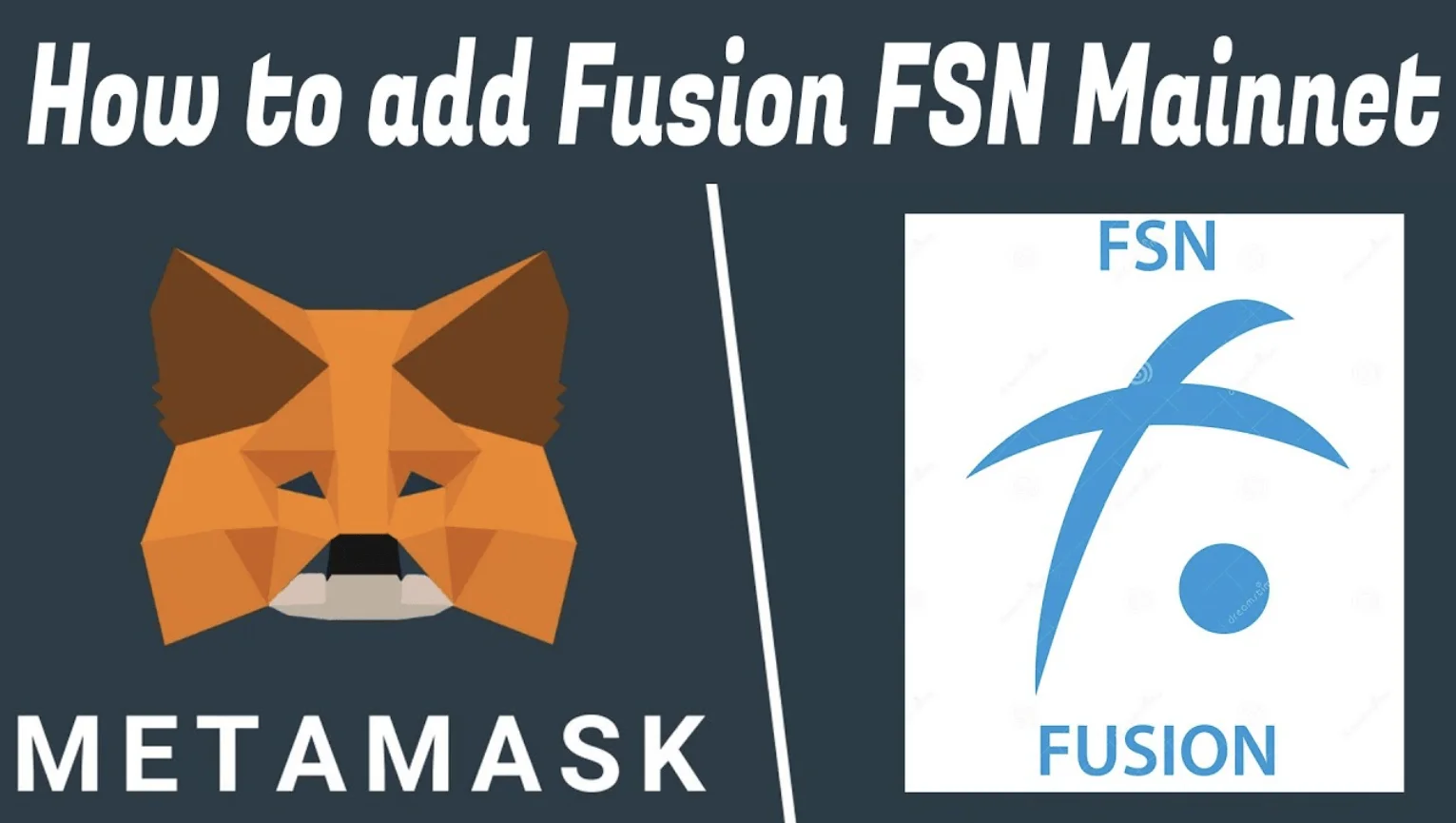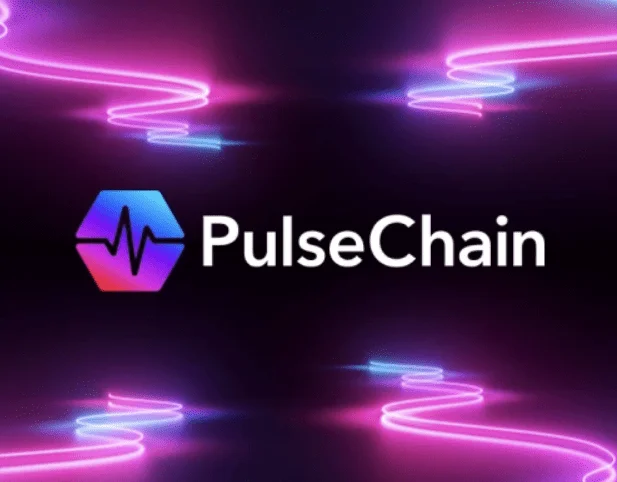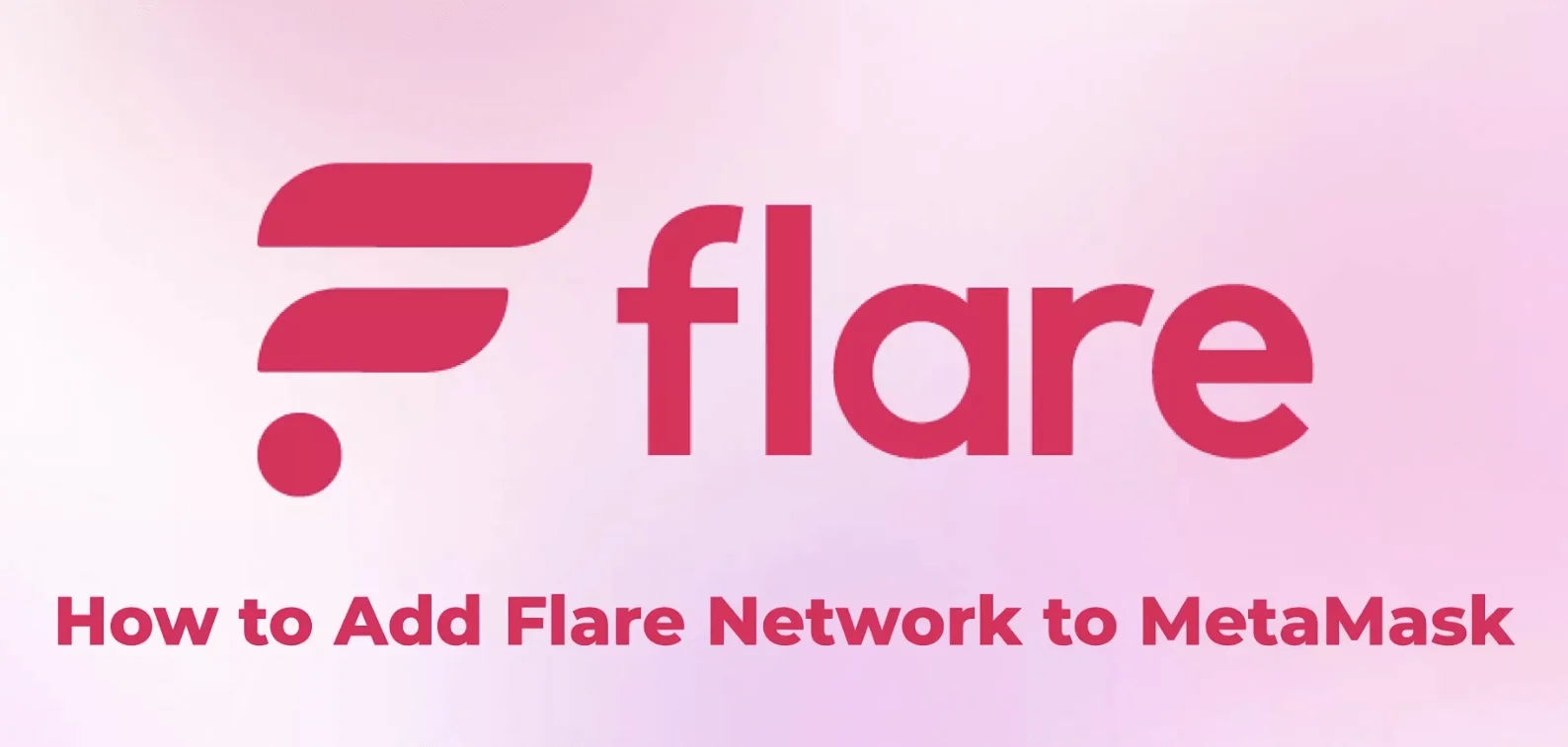Polygon to Solana bridge is a game-changer in the DeFi and Web3 space. This process allows users to seamlessly transfer tokens like USDC, MATIC, and ETH between these two popular blockchains. With solutions like Portal Bridge, Allbridge, and others, the transfer is not only efficient but also cost-effective, typically involving minimal fees.
These bridges offer a user-friendly interface, making it easy for anyone to connect their wallets, select the desired token and amount, and complete the transfer with a few clicks. The safety of these bridges is paramount, and recent enhancements have made them more secure and reliable.
Whether you’re a seasoned crypto enthusiast or new to the scene, understanding how to bridge assets from Polygon to Solana opens up a world of possibilities in the evolving blockchain ecosystem.
Understanding the Polygon to Solana Connection
The Need for a Bridge Between Polygon and Solana
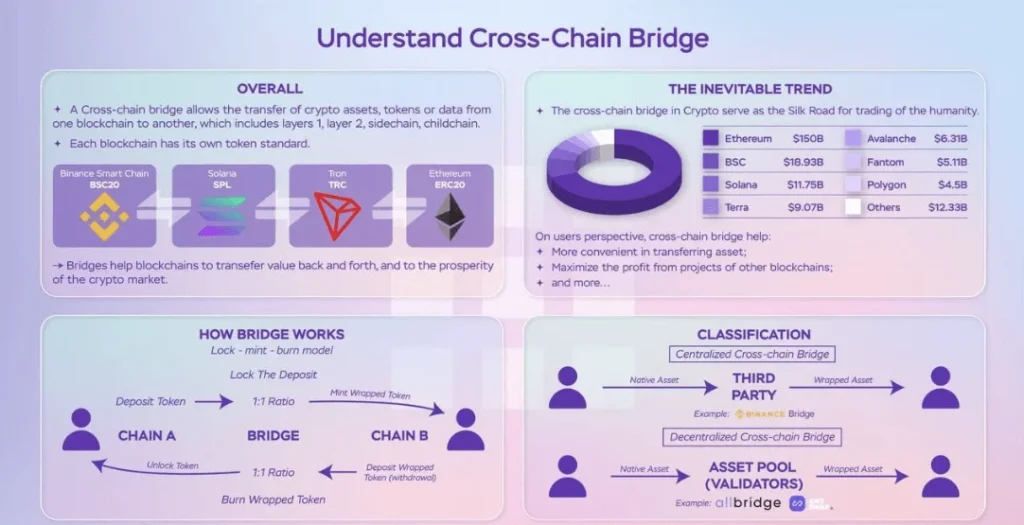
In the dynamic world of blockchain technology, the ability to transfer assets seamlessly across different networks is crucial. This is where the need for a bridge between Polygon and Solana arises.
Polygon, known for its Ethereum compatibility and scalability, and Solana, celebrated for its high-speed and low-cost transactions, are two leading blockchains in the DeFi ecosystem. However, they operate on different architectures, making direct asset transfers challenging.
A bridge serves as a solution, enabling users to move assets like MATIC, USDC, and ETH between these networks efficiently, expanding the scope of DeFi applications and enhancing liquidity across the blockchain space.
Basics of Asset Transfers Across Blockchains
Asset transfers across blockchains involve a series of steps to ensure a secure and seamless transaction. Users typically start by connecting their wallets, such as MetaMask for Polygon and Phantom for Solana, to the bridging platform. They then select the asset and amount they wish to transfer.
The bridge, using smart contracts, locks the assets on the source chain and issues corresponding tokens on the destination chain. This process, managed by bridges like Portal Bridge, is designed to be user-friendly, with clear fields and buttons guiding users through each step.
The transaction is completed within minutes, reflecting the assets in the recipient’s Solana wallet, thus making cross-chain transfers a reality in the blockchain world.
Portal Bridge: The Go-To for EVM to Non-EVM Transfers
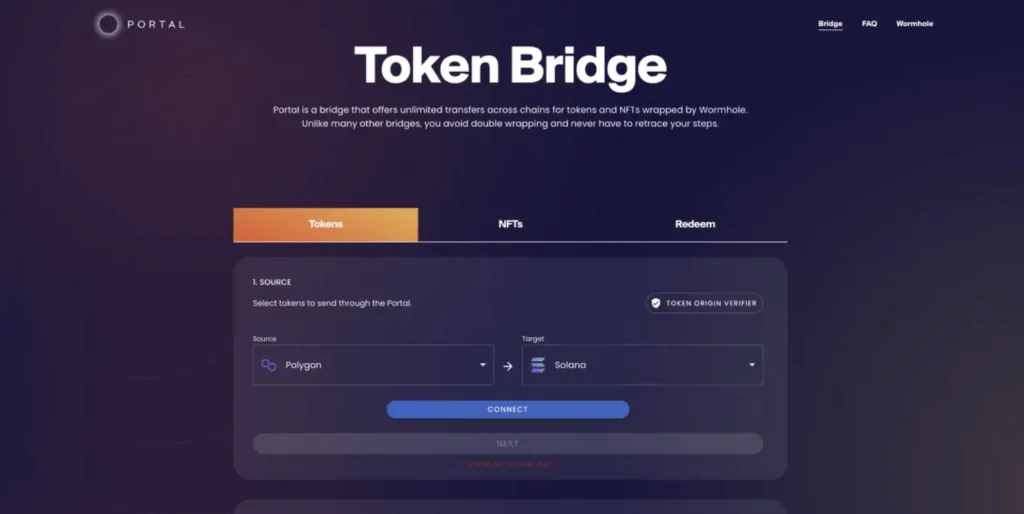
How Portal Bridge Simplifies Transfers
Portal Bridge stands out as a key player in bridging assets between Ethereum Virtual Machine (EVM) and non-EVM blockchains like Solana.
It simplifies the transfer process by locking the original token in a smart contract on the source chain and minting a new Portal-wrapped token on the target chain.
This approach allows users to swap these tokens for other or native tokens on the target chain, making the transfer process seamless and efficient.
Networks and Tokens Supported by Portal Bridge
Portal Bridge supports a wide range of networks, including Ethereum, Solana, Celo, Sui, NEAR, Moonbeam, Injective, Fantom, and more. This extensive compatibility makes it a versatile choice for users looking to bridge tokens across various blockchain ecosystems.
The supported tokens include WETH, USDC, USDT, WBTC, SOL, SUI, NEAR, and DAI, offering users a diverse selection for their asset transfer needs.
ALSO READ: How to Add Solana to MetaMask: A Simple Guide
Easy Steps to Use Portal Bridge for Asset Transfers
Using Portal Bridge for asset transfers involves a few straightforward steps:
1. Connect Wallets
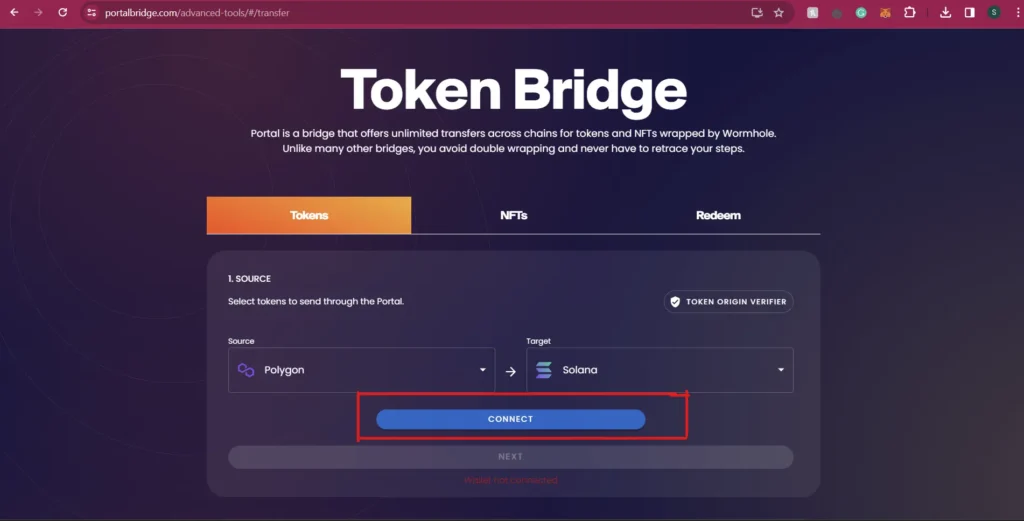
Users start by connecting their wallets, such as MetaMask for EVM chains and Phantom for Solana, to the Portal Bridge platform.
2. Select Source and Destination

Choose the source chain (like Polygon) and the destination chain (such as Solana).
3. Choose Tokens and Amount
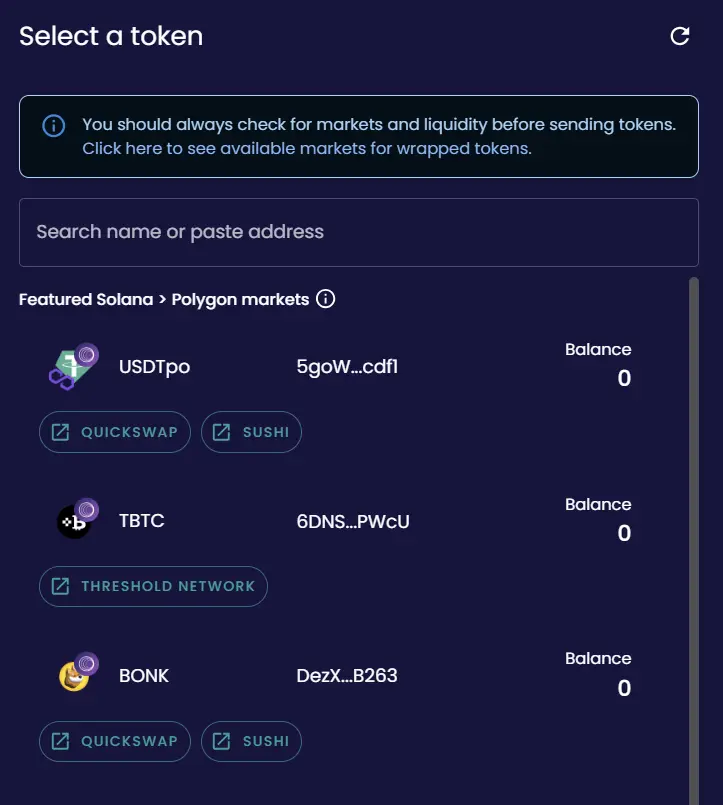
Select the token and the amount you wish to transfer.
4. Review and Confirm
Review the transaction details, including any fees, and confirm the transfer.
5. Complete the Transfer
Click the send button to initiate the transfer. The assets will reflect in the recipient’s wallet, typically within 10 minutes.
Portal Bridge’s user-friendly interface and clear step-by-step process make it a reliable and efficient solution for bridging assets across EVM and non-EVM blockchains.
Fees: What It Costs to Bridge Your Assets
Understanding the Fee Structure in Asset Transfers
When transferring assets across blockchains, understanding the fee structure is crucial. Typically, these fees are composed of two parts: the bridging fee and the network gas fee.
The bridging fee is charged by the bridge service for facilitating the transfer, while the gas fee is required for the execution of transactions on the blockchain. These fees can vary based on the blockchain’s congestion and demand at the time of the transfer.
Users need to review these costs before initiating a transfer to ensure a cost-effective and efficient transaction.
Portal Bridge’s Competitive Fees
Portal Bridge, known for its efficient bridging between EVM and non-EVM chains like Solana, stands out for its competitive fee structure. The bridging fees for using Portal are sub-cent, making it an economical choice for users.
The most significant cost in the transaction is typically the gas fee, which depends on the network’s current conditions.
This low fee structure of Portal Bridge, often around $0.0001 per transfer, makes it an attractive option for users looking to transfer assets across different blockchains in a cost-effective manner.
ALSO READ: How to Add Solana to MetaMask: A Simple Guide
Is Your Transfer Safe? Security in the Spotlight
Trust and Safety with Portal Bridge
When it comes to transferring assets across blockchains, the security of the bridge used is paramount. Portal Bridge, which facilitates asset transfers between EVM and non-EVM chains like Solana, is designed with security as a top priority.
The bridge operates under the guardianship of a trusted group of validators external to any blockchains, ensuring a secure transfer process.
These validators play a crucial role in maintaining the integrity and safety of the transactions, making Portal Bridge a trustworthy choice for users.
Addressing Security Incidents and Enhancements
While Portal Bridge is generally considered secure, like any technology, it is not immune to potential risks. In the event of any security incidents, the bridge employs robust measures to address and rectify the situation promptly.
Additionally, Portal Bridge continuously enhances its security protocols to stay ahead of potential threats.
This proactive approach to security, including the use of a multi-sig system for its guardians, ensures that Portal Bridge remains a safe and reliable option for asset transfers in the blockchain world.
Alternative Transfer Methods
Centralized Exchanges as a Bridging Option
Centralized exchanges offer an alternative method for transferring assets between blockchains. Platforms like Binance provide a user-friendly interface where users can deposit assets into a Polygon wallet on the exchange and then withdraw them directly to a Solana wallet.
This method adds an additional layer of security and convenience, especially for users who prefer the familiarity and support services of centralized exchanges.
However, it’s important to be aware of the inherent risks associated with centralized platforms, including the potential for security breaches.
Comparing Portal Bridge with Other Solutions
When comparing Portal Bridge with other solutions, it’s essential to consider factors like security, ease of use, and support networks. Portal Bridge is known for its low fees and support for a wide range of EVM and non-EVM chains, making it a versatile option for cross-chain transfers.
Other solutions, such as Octus Bridge, Allbridge, and Darwinia Network, offer their unique features and benefits.
For instance, Allbridge provides a simple and modern way to transfer assets with robust security measures, while Darwinia Network allows access to the Polkadot ecosystem for projects deployed on public blockchains like Ethereum. Each solution has its strengths, and the choice depends on the user’s specific needs and preferences.
Key Takeaways: Polygon to Solana Bridge
- Portal Bridge Efficiency: Portal Bridge is acclaimed for facilitating smooth transitions between EVM and non-EVM networks like Solana, offering a diverse range of tokens and minimal transaction costs.
- Centralized Exchange Alternatives: Platforms like Bybit and Binance provide alternative methods for asset transfers, allowing users to deposit and withdraw assets directly between Polygon and Solana wallets.
- Security Measures: While Portal Bridge is generally secure, users should be aware of potential risks. The Portal team actively addresses security concerns to enhance safety.
- Competitive Fees: Portal Bridge offers notably competitive fees, often around $0.0001 per transaction, making it an economical choice for cross-chain transfers.
- User-Friendly Process: The bridge provides a straightforward process for asset transfers involving wallet connections, token selection, and transaction initiation.
- Alternative Solutions: Other bridging solutions like Octus Bridge, Allbridge, and Darwinia Network offer unique features, catering to different user needs in the blockchain ecosystem.
Article Sources
At UncryptoNote, we prioritize accuracy and integrity in our content. Our writers are required to utilize primary sources to substantiate their work. This includes white papers, government data, firsthand reporting, and interviews with experts in the industry. We also incorporate original research from other credible publishers when relevant. This rigorous approach ensures that we deliver content that is both precise and impartial.
- BuyBitcoinBank: How to Bridge from Solana to Polygon
- Bitkan: Polygon To Solana Bridge: How-To Guide
- DataWallet: How to Bridge from Polygon to Solana
- Medium: Solbridge launched a bridge from Polygon to Solana
- CoinMarketCap: How To Bridge to Solana
